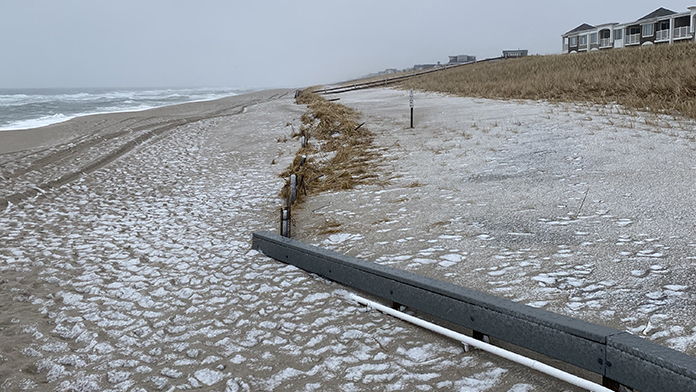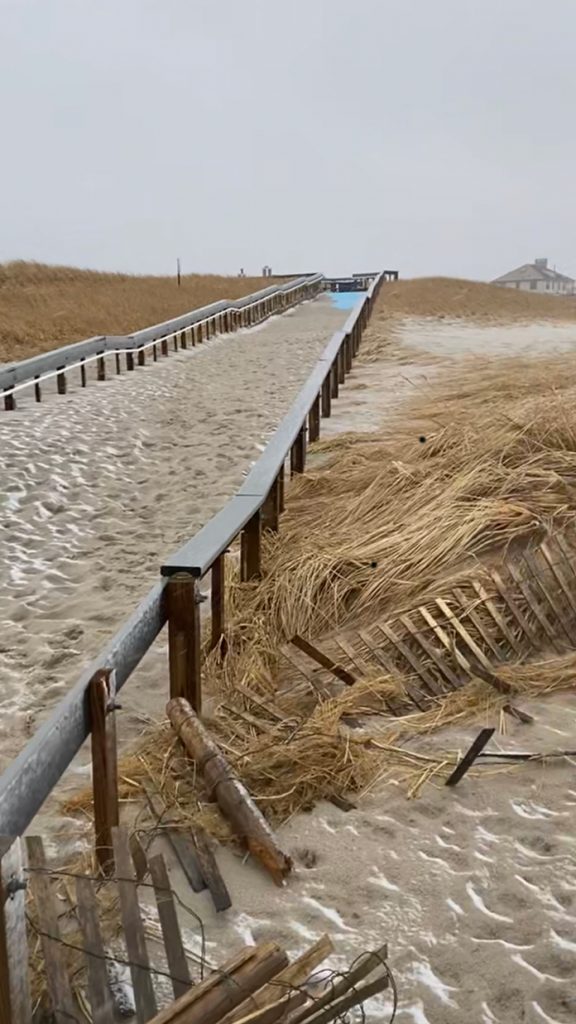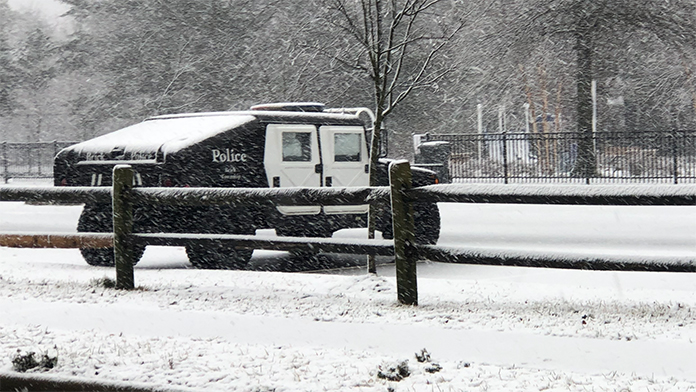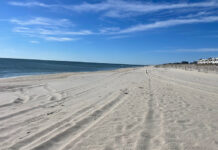
BRICK – It was winds and flooding, not snow, that caused most of the problems in Brick during a winter storm nor’easter on February 1st and 2nd.
While some areas of New Jersey reported over two feet of snow, winds gusting up to 50 mph slammed the Jersey Shore, causing significant beach erosion.
“The beaches did take a beating – we had two high tides during that storm we were concerned about, and it did do some pretty bad damage,” said Director of Recreation Dan Santaniello after the storm.
Some of the seagrass was ripped up, but no buildings or structures were affected, just the beach and dunes, he said. Most of the damage seems to be just south of Brick Beach 3 near the Ocean Club, he added.
“The sand has to go somewhere, so it settles just offshore, and usually by the summer, mother nature brings it back to shore, but it doesn’t replace the seagrass,” he said.
It’s been about two years since there has been a storm strong enough to cause beach erosion, Santaniello said. “If we can finish the winter with no additional nor’easters, we should be okay,” he added.
Santaniello said the Recreation Department is on an A/B schedule because of COVID, with half the staff working in the office at a time.
“That way if someone gets sick, it doesn’t deplete the whole office,” he said, which seems to be working very well.
Plans call for the staff to come back full-time on March 1, at which time some employees will go over to the beach and use machinery to pull sand away from where it piled up and level the beaches out, Santaniello said.

“Then we’ll go from there,” he added.
Governor Phil Murphy declared a State of Emergency on at 7 p.m. on Sunday January 31, closing all six of New Jersey’s COVID vaccine mega-sites for February 1.
Residents in the barrier island community of Normandy Beach reported streets flooded to depths they hadn’t seen since Superstorm Sandy. Police Chief James Riccio said the department assisted a motorist who drove into the flood water there and became disabled.
On the mainland, police used a four-wheel drive vehicle to get people to and from their homes in Seawood Harbor since an access road was under about a foot of water.
Chief Riccio said the township experienced flooding in the areas that typically flood during these type of events, including Normandy Beach, Island Drive and Shore Acres, where the department has been keeping a high-wheeled military surplus vehicle at Angela Hibbard Park so it could be utilized when the area floods, he said.

The Department of Public Works spread some 250 tons of salt on township roads, said Business Administrator JoAnn Bergin.
“We salted once on Sunday evening, and then again early on Wednesday because school was going to be back in session,” she said. (Schools held an “all remote” day during the storm).
Snow accumulation varied throughout the town with the northern end getting the most, she added. Some 43 pieces of equipment were deployed onto township roads between Monday and Tuesday with a focus on playing the hardest-hit areas, Bergin said.






